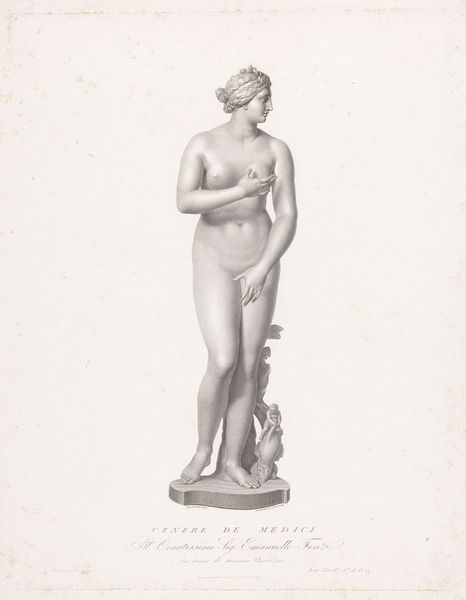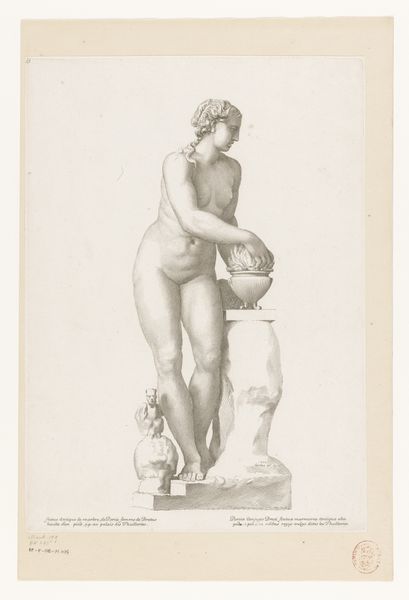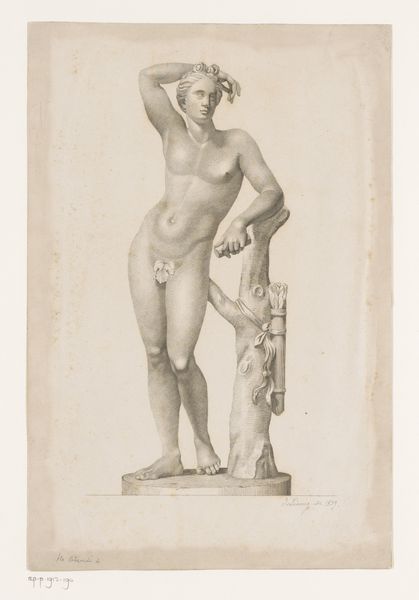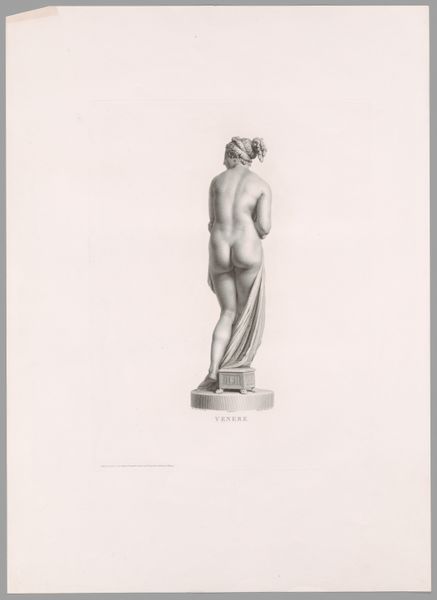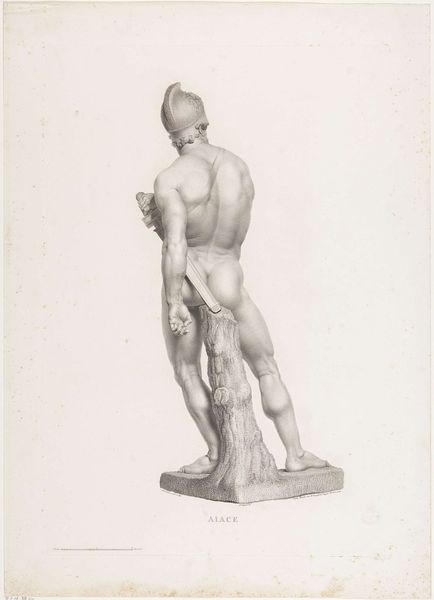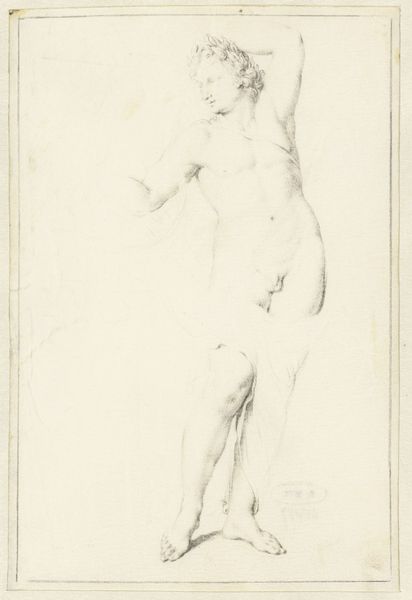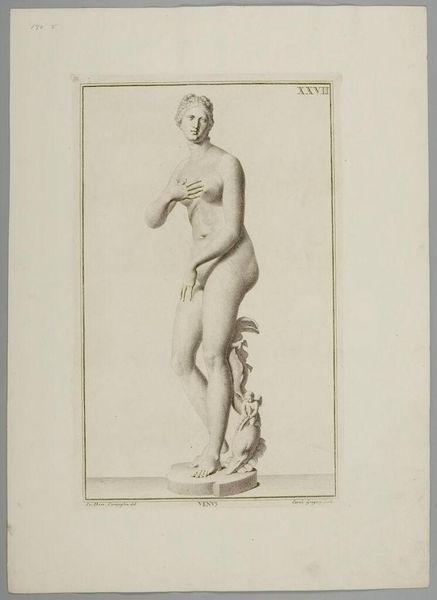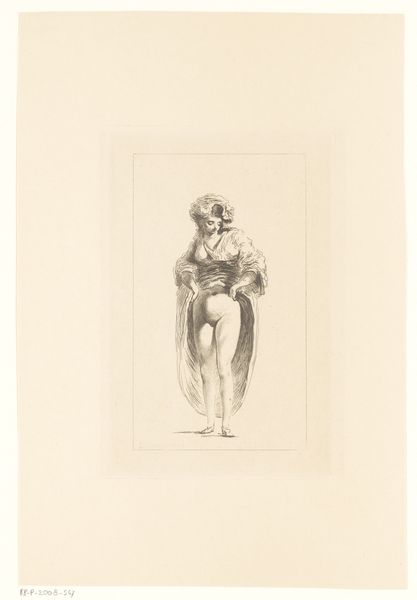
drawing, pencil
#
drawing
#
pencil sketch
#
classical-realism
#
charcoal drawing
#
figuration
#
form
#
pencil drawing
#
pencil
#
portrait drawing
#
history-painting
#
nude
Dimensions: height 545 mm, width 425 mm
Copyright: Rijks Museum: Open Domain
Editor: Here we have "Venus," a pencil drawing made between 1820 and 1833 by Jean Augustin Daiwaille. It's incredibly delicate. It feels almost like a memory. What do you see in this rendering of the famous statue? Curator: I see a layering of cultural echoes. Daiwaille isn't simply copying a statue; he's interpreting a Hellenistic sculpture of a goddess, itself a product of layered meanings and cultural exchange. Editor: Layered how? Curator: Consider the visual language. Venus, the Roman equivalent of Aphrodite, embodies beauty, love, and fertility. But her pose here – the modest hand gestures – speaks to a cultural tension, perhaps an attempt to reconcile classical ideals with later sensibilities. The drawing itself, with its delicate lines, becomes a filter, softening the pagan sensuality. Notice the dolphin at her feet? Editor: Now that you mention it, yes! Curator: It’s a traditional symbol associated with Venus, but within the context of a pencil drawing, it transforms. The dolphin speaks to the sea, but is also suggestive of transformation, rebirth and the guidance of souls through transitional and troubled times. This choice speaks volumes about cultural memory and the human need for meaning through symbols, what do you think? Editor: I never would have picked up on that! It makes you wonder what Daiwaille thought about when drawing this. Thanks! Curator: It's a pleasure. It demonstrates how much an image can retain meaning through diverse cultural symbols.
Comments
No comments
Be the first to comment and join the conversation on the ultimate creative platform.

